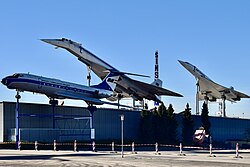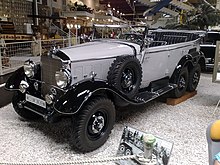
Concorde is a retired Anglo-French supersonic airliner jointly developed and manufactured by Sud Aviation and the British Aircraft Corporation (BAC). Studies started in 1954, and France and the UK signed a treaty establishing the development project on 29 November 1962, as the programme cost was estimated at £70 million . Construction of the six prototypes began in February 1965, and the first flight took off from Toulouse on 2 March 1969. The market was predicted for 350 aircraft, and the manufacturers received up to 100 option orders from many major airlines. On 9 October 1975, it received its French Certificate of Airworthiness, and from the UK CAA on 5 December.

The Tupolev Tu-144 is a Soviet supersonic passenger airliner designed by Tupolev in operation from 1968 to 1999.

Supersonic speed is the speed of an object that exceeds the speed of sound (Mach 1). For objects traveling in dry air of a temperature of 20 °C (68 °F) at sea level, this speed is approximately 343.2 m/s. Speeds greater than five times the speed of sound (Mach 5) are often referred to as hypersonic. Flights during which only some parts of the air surrounding an object, such as the ends of rotor blades, reach supersonic speeds are called transonic. This occurs typically somewhere between Mach 0.8 and Mach 1.2.

A supersonic transport (SST) or a supersonic airliner is a civilian supersonic aircraft designed to transport passengers at speeds greater than the speed of sound. To date, the only SSTs to see regular service have been Concorde and the Tupolev Tu-144. The last passenger flight of the Tu-144 was in June 1978 and it was last flown in 1999 by NASA. Concorde's last commercial flight was in October 2003, with a November 26, 2003 ferry flight being its last airborne operation. Following the permanent cessation of flying by Concorde, there are no remaining SSTs in commercial service. Several companies have each proposed a supersonic business jet, which may bring supersonic transport back again.

The Tupolev Tu-154 is a three-engined, medium-range, narrow-body airliner designed in the mid-1960s and manufactured by Tupolev. A workhorse of Soviet and (subsequently) Russian airlines for several decades, it carried half of all passengers flown by Aeroflot and its subsidiaries, remaining the standard domestic-route airliner of Russia and former Soviet states until the mid-2000s. It was exported to 17 non-Russian airlines and used as a head-of-state transport by the air forces of several countries.

The Junkers Ju 52/3m is a transport aircraft that was designed and manufactured by German aviation company Junkers. First introduced during 1930 as a civilian airliner, it was adapted into a military transport aircraft by Germany's Nazi regime, who exercised power over the company, for its war efforts over the objections of the company's founder Hugo Junkers.
Supercruise is sustained supersonic flight of a supersonic aircraft without using afterburner. Many supersonic military aircraft are not capable of supercruise and can maintain Mach 1+ flight only in short bursts with afterburners. Aircraft such as the SR-71 Blackbird are designed to cruise at supersonic speed with afterburners enabled.

The Paris Air Show is a trade fair and air show held in odd years at Paris–Le Bourget Airport in France. Organized by the French aerospace industry's primary representative body, the Groupement des industries françaises aéronautiques et spatiales (GIFAS), it is the largest air show and aerospace-industry exhibition event in the world, measured by number of exhibitors and size of exhibit space, followed by UK's Farnborough Air Show, Dubai Air Show, and Singapore Airshow.

Sinsheim is a town in south-western Germany, in the Rhine Neckar Area of the state Baden-Württemberg about 22 kilometres (14 mi) south-east of Heidelberg and about 28 kilometres (17 mi) north-west of Heilbronn in the district Rhein-Neckar.
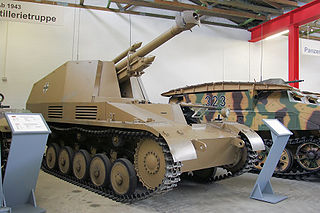
The Sd.Kfz. 124 Wespe, also known as Leichte Feldhaubitze 18/2 auf Fahrgestell Panzerkampfwagen II (Sf.), is a German self-propelled gun developed and used during the Second World War. It was based on a modified Panzer II chassis.
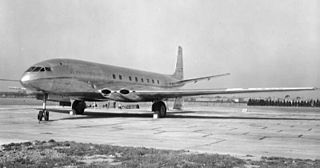
The Jet Age is a period in the history of aviation defined by the advent of aircraft powered by jet turbine engines and the social and cultural changes fostered by commercial jet travel.

Twenty Concorde aircraft were built: two prototypes, two pre-production aircraft, two development aircraft and 14 production aircraft for commercial service. With the exception of two of the production aircraft, all are preserved, mostly in museums. One aircraft was scrapped in 1994, and another was destroyed in the Air France Flight 4590 crash in 2000.

A supersonic aircraft is an aircraft capable of supersonic flight, that is, flying faster than the speed of sound. Supersonic aircraft were developed in the second half of the twentieth century. Supersonic aircraft have been used for research and military purposes, but only two supersonic aircraft, the Tupolev Tu-144 and the Concorde, ever entered service for civil use as airliners. Fighter jets are the most common example of supersonic aircraft.
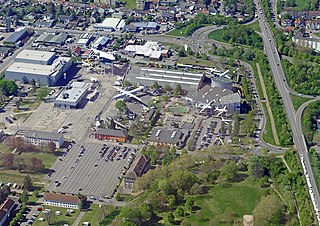
The Technik Museum Speyer is a technology museum in Speyer (Rhineland-Palatinate), Germany.

The OK-GLI, also known as Buran Analog BTS-02, was a Soviet atmospheric test vehicle of the orbital Buran spacecraft. It was constructed for the Buran programme in 1984, and was used for 25 test flights between 1985 and 1988 before being retired.
Mastermodell GmbH was a plastic model and toy manufacturer established in 1958 in Zschopau, East Germany.

The Central Air Force Museum is an aviation museum in Monino, Moscow Oblast, Russia. A branch of the Central Armed Forces Museum, it is one of the world's largest aviation museums, and the largest for Soviet aircraft, with a collection including 173 aircraft and 127 aircraft engines on display. The museum also features additional displays, including Cold War-era American espionage equipment, weapons, instruments, uniforms, artwork, and a library containing books, films, and photos is also accessible to visitors.
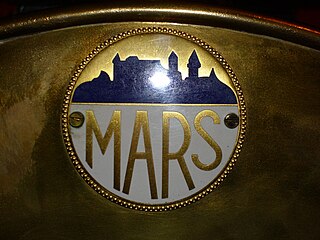
Mars was a manufacturer in Nürnberg, Germany founded in 1873 that manufactured motorcycles in various periods from 1903 until 1958.
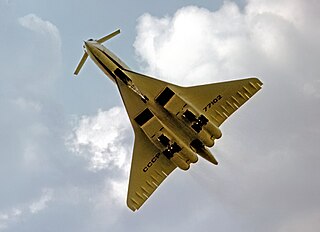
The 1973 Paris Air Show Tu-144 crash was the destruction of the second production Tupolev Tu-144 at Goussainville, Val-d'Oise, France, which killed all six crew members and eight people on the ground. The crash, at the Paris Air Show on Sunday, 3 June 1973, damaged the development program of the Tupolev Tu-144.

The White Eagle Museum is a Polish military museum located in the town of Skarżysko-Kamienna in the central Świętokrzyskie Voivodeship, opened in 1969.
